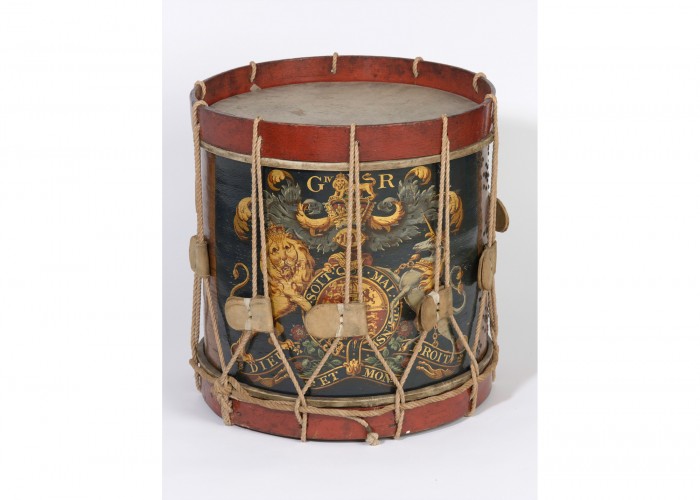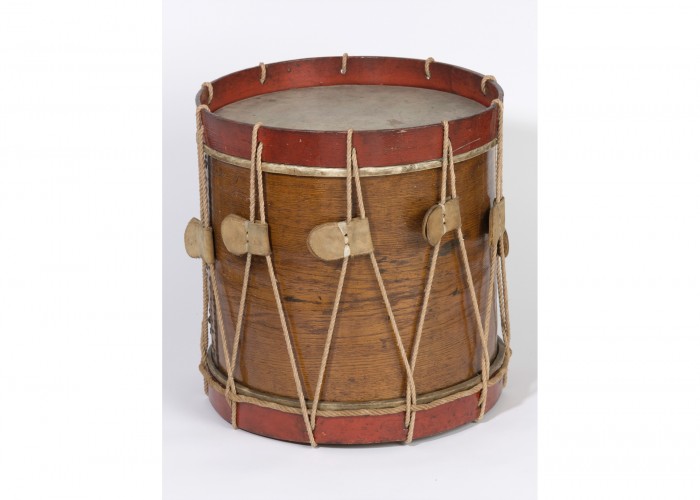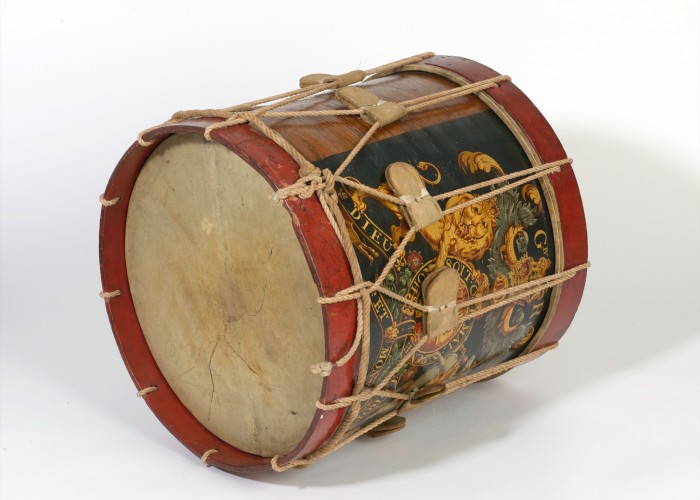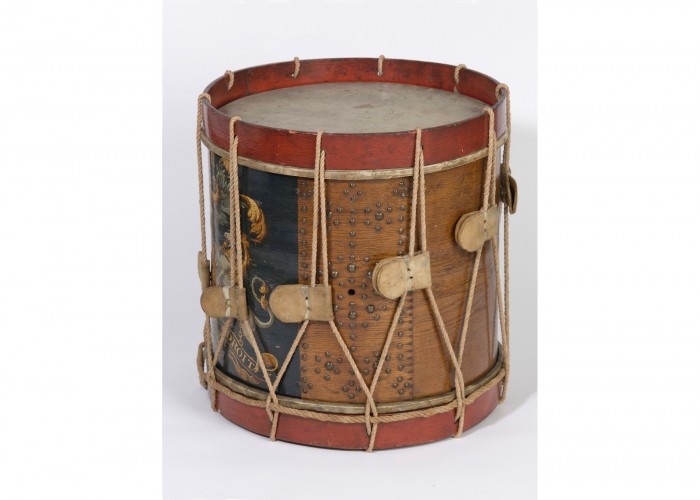Drum of the 1st Foot Guards

 Side drum of the 1st Regiment of Foot Guards. Copyright National Army Museum.
Side drum of the 1st Regiment of Foot Guards. Copyright National Army Museum.
 Side drum of the 1st Regiment of Foot Guards. Copyright National Army Museum.
Side drum of the 1st Regiment of Foot Guards. Copyright National Army Museum.
 Side drum of the 1st Regiment of Foot Guards. Copyright National Army Museum.
Side drum of the 1st Regiment of Foot Guards. Copyright National Army Museum.
This is a drum carried at the Battle of Waterloo by a soldier of the 1st Foot Guards Regiment. Drums were a vital part of the battlefield communication system, with different drum rolls used to give orders to units of soldiers on chaotic battlefields. Military drummers were often recruited very young, sometimes while still children, and at least one boy drummer at Waterloo was just 14.
Drums were an integral part of British Army life – soldiers marched to the beat of the drum from the day they joined up. In Britain, commanders of regiments would be given “beating orders”, authorising their recruiting parties to travel the country enlisting new soldiers “By Beat of Drum”. On the battlefield, drums were used to give orders – the shouts of an officer might be misheard or lost in the noise of battle, but specialised drumrolls could communicate orders to change formation, advance or retreat. Drummers were also responsible for a different type of discipline – they carried whips, and were responsible for punishing soldiers who were sentenced to be flogged.
Drummers were often thought of as young soldiers, joining the Army as young as 12 years old. The idea of young boys marching into battle was loved by the Victorians, and several romanticised paintings from the 19th century show young drummer boys meeting tragic deaths. In fact, the average age of the 304 drummers in the British forces at Waterloo was 25, with about 10% being under 16.
The Guards regiments were originally founded to act as personal bodyguards to monarchs, in the days when British royalty would command their armies in person. This explains the royal coat of arms painted on the drum, with the lion and the unicorn over the personal motto of the British royal family, “Dieu et mon droit” [“God & my right”]. At Waterloo, some of the Foot Guards defended the fortified farmhouse of Hougoumont, while others were vital for defeating the attack of Napoleon’s Imperial Guard late in the battle.
-
Education overview
You can discover the story of a Grenadier Guardsman on the Waterloo 200 Schools E-Book. Waterloo Primary School have researched the life of Private George Barton, a local soldier who fought at Waterloo, and created a tribute to his service.
If you’re a teacher, student, or parent, you can join the Waterloo 200 Schools programme. To find out how to sign up your class and discover your local Waterloo history, contact [email protected].
-
Curatorial info
- Originating Museum: National Army Museum
- Accession Number: NAM. 1963-05-19
- Material: Wood, hemp, leather
- Size: 45 cm x 40 cm
-
Use this image
You can download a higher resolution image below, but please note the conditions of the licence.
- Rights Holder: Copyright National Army Museum
- License Type: All Rights Reserved
Find it here
This object is in the collection of National Army Museum










